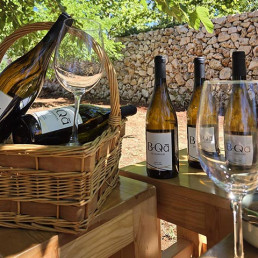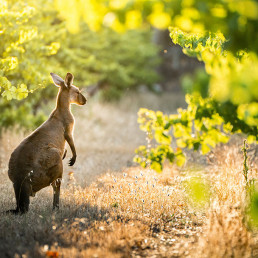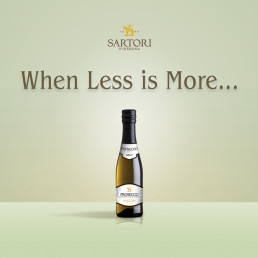Focus On: Organic Wines
Do the right thing for the Planet - drink organic

‘Mother Nature knows best’. ‘Eat well to feel well’. ‘You are what you eat (and drink)’. These age-old truisms certainly portray todays catch cry for healthier living and save-the-planet awareness. Is Organics in wine though just a fad or is it the future? Or is it something that we need to embrace and now as increasingly, the younger generation ardently pressure us to believe. Here at Dhall & Nash it’s often been a subject of lively discussion. Can you taste the difference? Is it worth the cost of certification? What do you think? Let’s take a look at Organics in the world of wine.
We get it – wine is, in its simplest form, a celebration of all that nature has the power to produce. So why spoil natural perfection with pesticides and chemicals some may question – particularly those in the on-trend Natural wine movement. Organic proponents suggest that by choosing organic wine, you can experience all the goodness of nature, with none of the environmental cost. But is it that simple?
“ORGANIC VITICULTURE ROCKS! It’s the future, it really is.”
Steve Wratten, Professor of Ecology at Lincoln University
How The Stats Stack Up
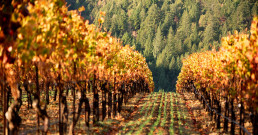
Globally, wine consumption is flat-lining! Down 3.6% in 2020 (according to OIV The International Organisation of Vine + Wine). Despite this flat global wine market, organic wine may offer a bright point for the wine industry. Certified-organic wine volume consumption has increased close to 9% on average a year (2014 to 2019). This has been backed by an exponential increase in certified area under vine (and in conversion), particularly in Italy, Spain, France, Australia, and NZ. Globally, organic’s share of total wine consumption currently sits at 2.75%. This is expected to climb to around 4% by 2024 (IWSR – International Wines and Spirits Record UK).
Looking ahead, it is expected organic wine will command an increasing share of total wine consumption. In the US, for example, a growing Ecommerce and Direct To Customer segment is helping to bolster the momentum of organic, biodynamic, and low-intervention wines. In Italy, for example, a new wave of organic and IGT-certified Tetra Pak wines is targeting younger consumers interested in eco-friendly and quality wine at a more accessible price point. They are using packaging and branding to highlight quality and environmental cues to their target consumers. Significant change is afoot.
“Organic and biodynamic viticulture is no longer a niche oddity.”
Jancis Robinson MW
Getting Down ‘n’ Dirty in the Vines
There’s a circle of life in the vineyard: It all begins with the relationship between the soil and the vine. A great wine is a living wine and the life of that soil must be nurtured as it will transmit its life force to the vine. The life force of the vine, in turn, must also be nurtured, as it returns that life to the soil.
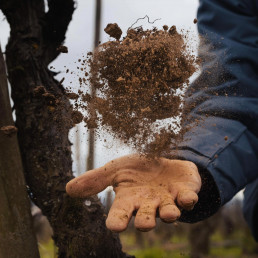
“The wine industry is very proud of its relationship with soil, but the truth is, it’s a spurious one” explains Wine Writer Tamlyn Currie. It’s true. The wine world and us passionate wine consumers so often obsess about terroir, mistaking that obsession for love of and respect for vineyard soils. But the sad truth is that one specific part of magical terroir, i.e., soil type, is irrelevant if that soil is dead, non-functioning, unable to do its real job.
Still conventional winemakers continue to use herbicides, pesticides, chemical fertilisers, and other synthetic sprays to protect their crops on a regular basis. For the main part, the production of wine is often as formulaic as the cultivation of wheat: water + chemicals + plants = profit. Does it need to be so for a precious liquid we revere and imbibe?
Now, we’re all aware of the danger that toxic chemicals pose to the environment. But what many of us don’t know is that this poisonous practice is just as harmful to us, as consumers. When farmers spray herbicides and pesticides onto their vines, these chemicals end up being absorbed by the vine, the soil, then altering natural pH content, killing wild biodiversity, and polluting nearby waterways. But that’s not all. They also end up in our food chain and maybe into our wines!
Further the practice of removing plant cover (with herbicides and ploughing) is basically skinning the earth alive. Plant cover is the planet’s ‘hide’. Among so many other ecosystems that plants provide, when it comes to vineyard soils, plant cover is crucial for regulating soil temperature, preventing soil erosion, regulating evaporation and water retention, fixing nitrogen, building essential structure which helps with drainage, nutrient transport, and oxygenation.
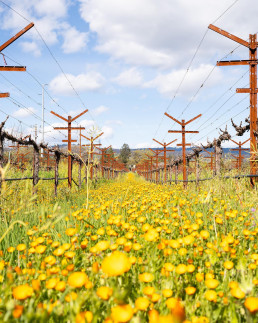
We haven’t even begun to understand the extent to which fungicides, pesticides and herbicides are damaging subsurface animal and microbial life, as they are sprayed onto plants and soak into the soil with rain and irrigation. But extensive research has been done and is ongoing on the damage being caused by nitrogen fertilisers; most of it is not even bioavailable and therefore is not taken up by plants. Ironically, the practice of feeding our soils is, in fact, polluting them. There must be a better way forward…
“Grapes are one of the fruits with the highest level of pesticide residues. Unfortunately, they don’t miraculously lose these residues as they arrive at the winery.”
Caro Feely, Wine Writer, JancisRobinson.com
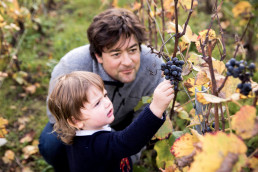
Choosing to buy organic wine is not just about avoiding the health implications of pesticide residues. It’s also good for the environment – which goes beyond the birds and the bees to include the people who live where grapes are grown and wine is made – winegrowers and vineyard workers, communities that live nearby and drink the water that runs off the farms.
The Do’s and Don’ts of Organics
Organic vineyards are not allowed to be sprayed with any synthetic chemicals: instead, these committed ‘woke’ winemakers turn to nature for inspiration. By embracing eco-friendly practices, organic farmers successfully subdue pests and disease in their vines, while simultaneously forming a sustainable self-regulating ecosystem that eliminates the need for artificial agents. Nice ☺
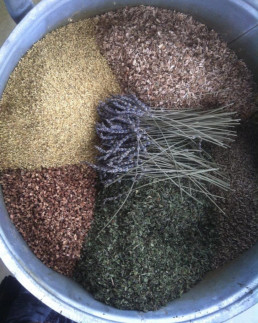
Here are a few ingenious ways in which organic farmers are forging the environmental way forward.
- Using natural animal predators to control insect pests and weeds: e.g., ducks, geese, chickens, sheep
- Using ‘enemy’ insect species to control parasites through natural predation.
- Growing of deterrent plant species in between vines to prevent plant-borne diseases (companion planting).
- Rotating different plants to nourish the soil, by restoring the correct pH balance and nutrients of the surrounding earth (crop rotation).
- Feeding vines with natural nutrient-boosters, like compost, green manure, seaweed etc.
- Planting ground-cover plants alongside vines to prevent soil erosion, to stabilize the landscape and to stop nutrients being leached out of the topsoil by rainfall/irrigation. They also limit their water usage by using mulches and monitoring soil moisture levels
- Creating an ‘ecosystem’ farm: designing a natural balanced vineyard system of sustainable, inter-supportive biodiversity i.e., an interactive community of animals, insects and plants living in balance.
“Organic grape growing, and the certification is no longer a marketing tool but a belief system.”
Tamlyn Currin, Wine Writer
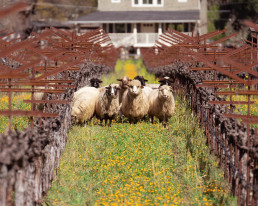
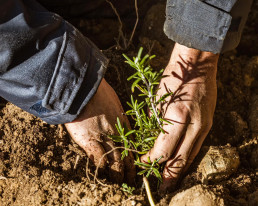
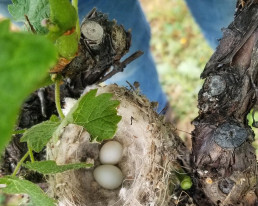
What Can Be “Added” in Organics?
As shown above, the organic viticulturist has preventive measures as his primary weapon against pests. He tries to prevent problems by being observant and attentive and manage the vineyard so that it can withstand attacks. Keeping the foliage aerated so that it dries up quickly after rain is, for example, one important tool. However, there are naturally occurring ‘chemicals’ that he can utilise in his vineyard and on the vines and still be organic.
Copper and sulphur are two products that are widely used in organic farming. In the vineyard they are the most important substances and are widely used both by organic growers and non-organic growers. Today, the use of copper is perhaps the most hotly debated subject in connection to organic agriculture and much research is ongoing.
Having to spray with copper is one of the great concerns for many organic growers. Copper is a heavy metal that in higher concentration can be toxic to the soil and to water. What is considered “high levels” and exactly how toxic copper is has been discussed for a long time, and still is. The European Union has, on several occasions, been close to banning copper in agriculture. It hasn’t done so yet, to the relief of all organic wine producers.
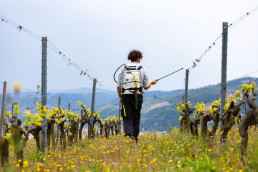
However, farmers are not allowed to use as much copper as they want. Until January 1, 2020, in the E.U. the permitted quantity was 6 kilos of copper per hectare a year. Now the limit is 4 kilos per hectare a year. Which some producers in humid climates think is on the low side. (The limit is now calculated as an average of the usage over seven years.)
Almost all vineyards around the world (particularly in humid regions like Bordeaux or West Auckland) are attacked to a greater or lesser extent of one or both of two potentially very devastating diseases: powdery and downy mildew. They are sometimes referred to by their French names oidium and mildiou. This is where copper and sulphur come as saviours for the organic grower. Otherwise fungal disease could wipe out entire vintages. Left untreated, it can even kill grapevines.
Copper is used to fight the sometimes very troublesome disease downy mildew (mildiou). It is a fungal disease that attacks the vine’s twigs, leaves, or grapes. Downy mildew can attack the vineyard throughout the growing season if it is humid. In difficult years you have to spray the vineyard many times.
Powdery mildew (oidium) is another potentially devastating fungal disease. It thrives if weather is warm/hot and humid. The organic growers, and also conventional ones, spray with sulphur. Sulphur is not as controversial as copper. But that does not mean that it is entirely safe. Certain small insects that are good to have in the vineyard, such as typhlodromes, can be harmed.
Organic producers can only use products that act by “contact”. This means that these products are sprayed on the surface of the vine and remain on the leaf or the grapes after treatment. They are effective as long as they are in contact, naturally rain washes them off.
There may be some hope on the horizon, though: numerous trials around the world are testing whether new, organically acceptable fungicides could supplement or even one day replace copper altogether. This research is still a work in progress.
What Happens in the Cellar?
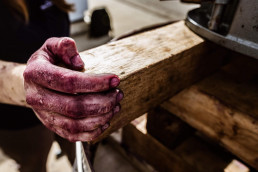
When it comes to the winemaking process, organic wines have much lower levels of sulphur and numerous other additives. There are 100’s of things that are legally allowed to be added to wine, the effects of which are not really known. Many are synthesised chemicals and additives that could potentially alter the taste and texture of a wine.
Sulphites are a common additive used as a preservative to stop the wine from spoiling. Sulphites aren’t altogether bad. They can preserve a wine’s shelf life, colour, taste, and freshness, but some people do have adverse effects to them. Organically certified wine has a limit to the amount of sulphites it can contain and keeping under this limit requires concerted effort.
Just to be clear – wine completely without sulphites doesn’t exist since these compounds are a natural by-product of the fermentation process. The main concern is whether or not sulphites are naturally occurring or chemically created. These compounds are measured in parts per million (ppm). Here’s the breakdown according to the USA organic regulations:
Conventional wine: Up to 350ppm
“Made with organic grapes” wine: Up to 100ppm
Biodynamic wine: Up to 100 ppm
Certified organic wine: Up to 10 ppm (only naturally occurring – nothing added)
Meanwhile, just to be confusing, in all EU countries the use of sulphites is allowed: wine could be considered “organic” if the wine is made with organic grapes and sulphite level is below between 100 and 150 parts per million (ppm), or 100 to 150mg/L, at bottling.
By the way – while there’s a common assumption that sulphites are to blame for everything from headaches to hangovers, studies show that tannins, histamines, and level of alcohol are much more likely to cause unwanted reactions. And don’t forget that unlike organic or biodynamic producers, commercial winemakers use dozens of undisclosed ingredients that could potentially cause side effects. Drinkers beware!
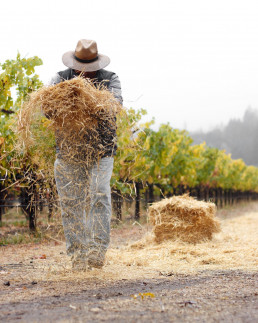
What are the differences between Organic, Natural and Biodynamic Wine?
Very broadly speaking, winemaking falls into two categories – conventional and organic. Beyond that, things start to get blurry. You’ve probably hit terms like ‘natural’, ‘biodynamic’, ‘minimal intervention’, ‘sustainable’, and ‘preservative free’ – some of these terms many in the biz can’t agree on a definition. There’s a lot to decipher, and when you’re staring at a wine list or standing in the aisle staring at a wall of wine it can fall into the too-hard-basket.
Briefly, we’ll give it a whirl here – with Natural wine basically, there are No Rules people, yep, no rules! (Except in France from 2020 where the government has approved a legal definition of natural wine and created a new category called vin méthode nature). Elsewhere in the world, Natural wine is unregulated, unpredictable, unfiltered, and made with minimal treatments in the winery. While there are technically no rules, most natural wine grapes are grown by small-scale, independent producers, hand-picked from sustainable, organic, or biodynamic vineyards, the wine is fermented with no added yeast, no additives are included in fermentation and little or no sulphites are added. Since this is a loose set of qualifications the quality of these wines can vary immensely but of course ask for recommendations to find some super funky and fun natural wines!
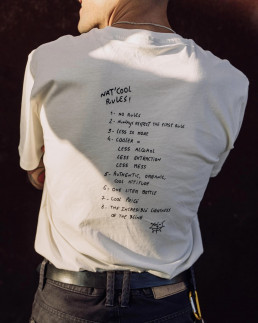
Biodynamic growers follow the same standard practices as all organic growers. On top of those practices, biodynamic growers use special plant, animal and mineral preparations, and work closely with the rhythmic influences of the sun, moon, and planets to maximise the natural potency of their land (see our Biodynamic blog here).
“the absolute key thing was reassuring growers that, yes, organics not only works but works really well in New Zealand and will allow us to maintain our hard-won image of premium quality.”
Bart Arnst, Organic/Biodynamic vineyard specialist, NZ
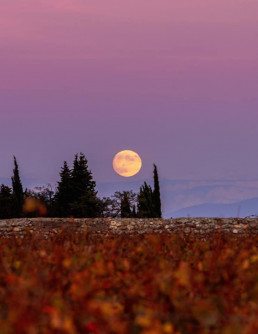
The other trending buzzword out there confusing us punters is ‘sustainability’. Good old New Zealand is a leading light in wine industry sustainability. Our country’s wineries first made sustainable wine headlines when they announced their ambitious plan to be net carbon zero by 2050. New Zealand was also the first to develop a nation-wide sustainability certification programme: Sustainable Winegrowing New Zealand™ (SWNZ). Today, a whopping 96% of New Zealand’s vineyard area is SWNZ certified. At the producer level, sustainability means crafting quality wine, in an economically viable and socially responsible manner, while protecting the environment for future generations.
The Organic Creds
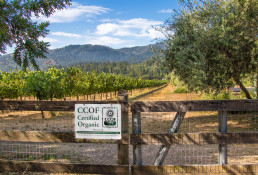
Ironically those who are not polluting have to pay to be certified while those who are using toxic systemic chemicals are not controlled and pay nothing. To our way of thinking, maybe it should be the other way around! Organic certification should be free and those using systemics should have to pay to be controlled so that we know they are using these products in the correct way and within the permitted levels. Not too revolutionary wouldn’t you think?
Anyway, in NZ, for a wine to call itself organic it has to have an official tick of approval from an independent third-party. BioGro and AsureQuality provide internationally recognised organic certification here. Biodynamic producers in New Zealand are certified by Demeter New Zealand. An arduous, multi-year certification process and yearly audits ensure that the whole winemaking process – from growing to bottling – complies with strict standards.
It’s true, there are wines out there made with organic processes that aren’t certified. Perhaps they’ve used organic grapes but topped it up with a man-made preservative that kills its eligibility. It is often the case that many small producers can’t afford the certifications, and others forgo this regulatory distinction for political or philosophical reasons or plain old time constraints. There’s many great wines and makers that fall into this group, but without that official sign-off, you’re relying on the honesty of the winemaker to truly do what they say. And remember, organic doesn’t equal vegan or added preservative-free. If that’s what you’re after, make sure you see those words specifically.
“[] strong microbial connection is what is important for the individual character of a wine – the true individual expression of the land – ‘terroir’. That’s what great wine is!”
Clive Dougall (Chairperson of OWNZ & Winemaker Deep Down Wines)
Is Organic Wine Better For Me? Does it Taste Better?
Wow! That’s the million-dollar question. Some argue it’s better to only put totally natural things into our bodies, but that doesn’t mean non-organic wine is bad for you. In fact, by a very large margin, most of the wine we drink isn’t organic and there’s very little research to say that that’s a problem. But it’s certainly a better choice for the planet, and given that’s where we live, that’s nothing to be sneezed at.
For a lot of folks, drinking organic wine just comes down to taste. If you’ve ever grown your own tomatoes, you’ll know what we mean when we say that organic produce has a certain vibrancy, and it can be fun to taste things just as nature intended. But as with anything else, organic doesn’t guarantee better quality. Just like non-organic wine, the calibre varies wildly and is all about your personal preferences. The best thing to do is get sipping and find out what you like for yourself.
Does Organic Equal More Expensive?
Yes and no. Organic grapes are at the mercy of the elements and take a lot of labour to protect. Lower yield (aka fewer usable grapes) means limited batches of wine, plus there’s the hefty certification costs to factor in.
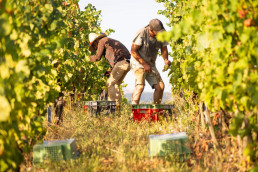
Many organic wines are truly artisan, handmade products and sometimes you might see this reflected in the price. But while that was true of nearly all organic wine five or ten years ago, that’s certainly not the case nowadays. As it becomes more accessible, so do the prices, and today’s drinker can easily find a solid bottle of organic good stuff that doesn’t hit the wallet hard.
Case in point, the wine coming from NAT COOL by Niepoort in Portugal is bottled proof that organic wine can be both remarkable and affordable. Or the organic Cristom Pinot Noirs with sensationally ripe, elegant, and complex flavours that shows that just like conventional wine, quality organic wine comes at all price points. So, if it’s something you love, be it for its wonderfully fresh flavour or its harmonious eco-friendly practices, it’s absolutely worth giving it a go.
As you’ve probably concluded from this blog, the subject of Organics can be quite contentious. But what we do know, is that Dhall & Nash represents many darn good organic and biodynamic wines from all over the globe, and some which fall into those categories in between. And thanks to a growing interest in everything environmentally friendly and sustainable, we are importing more organic wine than ever.
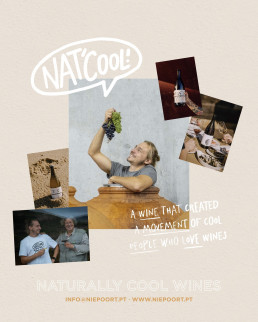
Staff 'Organic Picks'
“Consumption is changing and moving towards organic wine”
Dr Jamie Goode, Wine Anorak
In these times of drastic meteorological chaos and change, we all seek to be a little bit “greener”. We buy organic produce, shop with reusable bags, and recycle more than we used to. With sustainability and natural movements front and centre in our minds, the conscientious practices of organic wine-growing seem to feel ‘right’ for many of us. Perhaps now, more than ever, it could be timely to seek out some exquisite organic wines and taste test for yourselves!
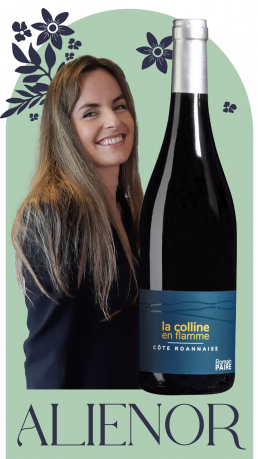
Alienor Moreau, Auckland Account Manager:
Domaine des Pothiers La Colline en Flamme Rouge
““If you are a Gamay lover, let me take you to a very rare appellation of the Loire Valley: the cote Roannaise. The Colline en Flamme is made from a variant of the Gamay called Gamy Saint-Romain. A very accessible, fresh, juicy and gourmand wine to share over dinner with your friends!”
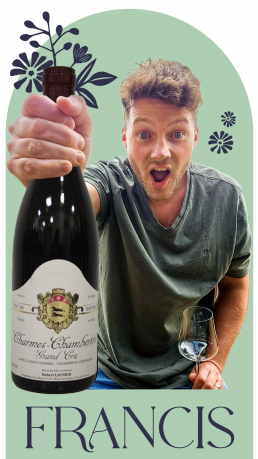
Francis Auclert, Wellington Account Manager:
Domaine Hubert Lignier Charmes Chambertin Grand Cru
“People sometimes forget that OLD WORLD regions and wineries do practice organic / Biodynamic! There is nothing like Burgundy, a region producing legendary wines from a history terroir with savoir-faire that makes tasty masterpieces!”
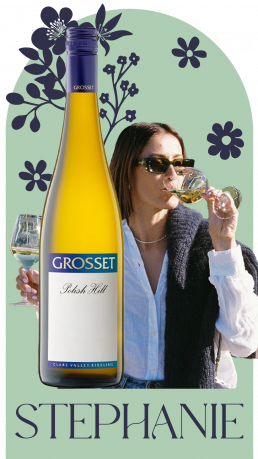
Stephanie Brooke, Central North Account Manager:
Grosset Polish Hill Riesling
“A bloody good drop! Lemon, peach, mineral (with a little hint of patriotism for over the ditch 🐨) It’s just so yum.”
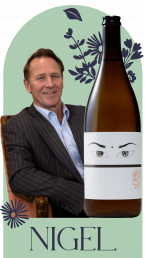
Nigel Kelly, Auckland Account Manager:
Nat’Cool Branco
“The Nat’Cool Branco was one of the first wines put in front of me when I started at Dhall & Nash and thus it’s a bit of a reference point. It’s easy, tasty and comes in a 1 litre bottle so it’s 33.3% more wine to enjoy than your standard bottle. Perfect for this upcoming summer.”
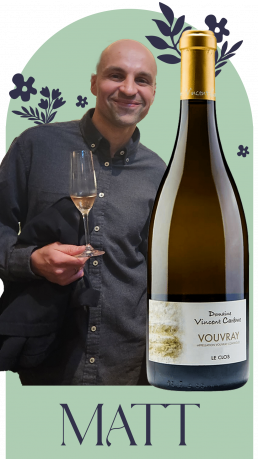
Matt King, Christchurch Account Manager:
Vincent Carême Le Clos
“So modestly priced for a wine of this energy, complexity and drive. Class in a glass! (60+ year old Chenin Blanc vines lovingly tended to in a walled single vineyard in Vouvray).”
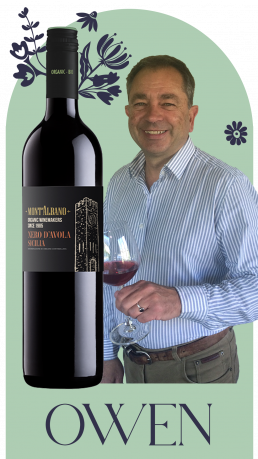
Owen Wood, Queenstown Account Manager:
Mont’Albano Nero d’Avola
“Mont’Albano was green before it was in fashion. From Sicily, this wine sings of its extreme terroir. Rich and ripe dark fruits, dried herb and toasted nut aromas. Succulent palate and silky tannins… a truly complex expression of the Mediterranean. Nero d’Avola pairs perfectly with roasted and grilled meats, ideal for those BBQ days on the way.”
Ultimate Staff Pick:
After our account managers put forward their personal picks, we sent out a company wide poll so we could ALL anonymously vote for the DN Ultimate Organic wine for 2024. Our final winner? Well…
Alienor’s Pick – Domaine des Pothiers La Colline en Flamme Rouge!
Here’s Dhall & Nash’s Organic and Biodynamic wineries: Folium, Cristom, Flowers, Duckhorn, Flowers, Hyde de Villaine, Spottswoode, Larmandier-Bernier, André Clouet, Domaine Muré, Alphonse Mellot, Domaine Testut, Vincent Careme, Domaine des Pothiers, Domaine de Noiré, Morey-Coffinet, Hubert et Laurent Lignier, Louis Jadot, Paul Jaboulet Aîné, Causse Marines, Château Gassier, Maior de Mendoza, Pares Balta, Niepoort, Drink Me Nat Cool, Mont’Albano, Sartori di Verona, La Stoppa, San Felice, Le Macchiole, Col d’Orcia, Château Marsyas, Château Bargylus, De Martino, Santa Ana, Grosset
